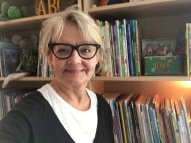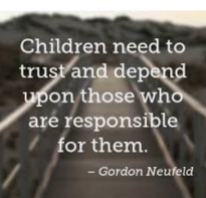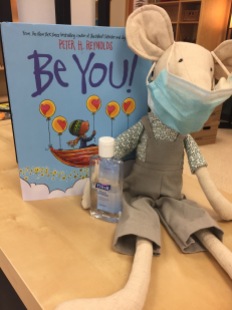
Today, as we navigate a world-wide pandemic, my excitement for the upcoming school year is overshadowed by an anxious and heavy heart. When one’s values and beliefs about learning and teaching are tested in a never before experienced global crisis, when my way of living and being in the classroom is now deemed unsafe, I am challenged to envision a new normal, a new way of being with young learners in the upcoming school year.
As I begin my 39th year, I was excited to be returning to the kindergarten classroom where I began my teaching career in 1981. I looked forward to engaging young learners in developmentally appropriate experiences that foster their learning and development in all areas through exploration and play, interacting closely with shared materials, spaces, classmates, and me. Sadly, what I know and looked forward to has changed. Yes, I am still excited for a new school year, as long as I am a teacher I will always look forward to September, but this year, my excitement is eclipsed by a level of worry and the unknown.
where I began my teaching career in 1981. I looked forward to engaging young learners in developmentally appropriate experiences that foster their learning and development in all areas through exploration and play, interacting closely with shared materials, spaces, classmates, and me. Sadly, what I know and looked forward to has changed. Yes, I am still excited for a new school year, as long as I am a teacher I will always look forward to September, but this year, my excitement is eclipsed by a level of worry and the unknown.
 So, what can I control? What do I know for sure about what I can hold onto and prepare for? The biggest challenge I have is to create a classroom that still reflects my values and beliefs about how children learn and grow, at the same time, follow new and rigid health and safety guidelines in the time of Covid-19.
So, what can I control? What do I know for sure about what I can hold onto and prepare for? The biggest challenge I have is to create a classroom that still reflects my values and beliefs about how children learn and grow, at the same time, follow new and rigid health and safety guidelines in the time of Covid-19.
I am reminded of a post I wrote five years ago, titled “The Classroom as the Third Teacher… What are your students learning to live?” I describe two different classrooms, the “by myself, don’t talk or share classroom” and the “community let’s choose and share classroom”. In my analysis I write, “When I establish conditions and expectations in my classroom that reflect my beliefs and values about learning and teaching, and focus on how children learn to work together and build relations, I can begin to help my students become caring and ethical people, self-directed and thinking learners.” This is such an important goal for me – to create learning spaces and places that help all children thrive and become capable and confident humans. I have to believe that I can still do this even in the time of Covid.
I have been thinking about two of my most important beliefs, beliefs I hold about teaching and learning: building caring attachments, where every child is prized and feels a sense of belonging, and second, engaging all children in hands-on, resource-rich learning environments, through play and exploration. How will these be reflected in my early learning classroom?
Building Caring Attachments and a Sense of Belonging
The most important gift I can give a child is an invitation to exist in my presence, to be wanted, to belong, to be significant, to be seen, to matter. Building attachments is the first priority of all development. Many believe that during this challenging time, building caring attachments may be a challenge. In a time where we are told to keep our distance and stand 2 metres away from the next person, when we are separated from each other by plexiglass partitions, and our smiles our hidden under our face masks, it is not easy to imagine how we will greet our students in the upcoming school year and begin building caring attachments.
 Colleagues ask me, how can we build caring relationships with our students if we have to be wary of one-to-one-interactions, keep our distance, and minimize our contact with others outside of our family bubbles? This is true; and yes, we need to be mindful of these guidelines, but I have to also believe that even with such guidelines I will be able to build caring attachments. My eyes, the tone of my voice, the words I share, and the thoughtful questions I ask will remain the same. I may not be able to come close beside my young learners, nor give them a spontaneous hug, but through my nods, my eyes, and my words, I will share the message that they are prized and cared for by me, their teacher.
Colleagues ask me, how can we build caring relationships with our students if we have to be wary of one-to-one-interactions, keep our distance, and minimize our contact with others outside of our family bubbles? This is true; and yes, we need to be mindful of these guidelines, but I have to also believe that even with such guidelines I will be able to build caring attachments. My eyes, the tone of my voice, the words I share, and the thoughtful questions I ask will remain the same. I may not be able to come close beside my young learners, nor give them a spontaneous hug, but through my nods, my eyes, and my words, I will share the message that they are prized and cared for by me, their teacher.
In his recent article, “Taking Care of Children in Alarming Times” Gordon Neufeld writes, “Remember the most important places of safety for children is being in the presence of a strong caring adult with a good alpha presence. No matter how scared we are and how little we know about what is happening or going to happen, we are still our child’s answer – including their bubble of safety in an alarming world.” I can be that adult that helps them navigate this challenging time.
As a classroom teacher, every morning I will still go through my “attachment ritual”. As children arrived they will be invited in and welcomed. As every child enters my room, I will take the time to greet each child by name, keeping a safe distance, I will still bend down to their level, so I can collect their eyes; they may not see my smile, but they will see my eyes, and my nod. I will offer a kind word, a comment, making a connection, sharing an observation, asking a question. This simple, yet incredibly powerful action, helps me earn my students’ trust and affection and their desire to be taught. I will continue to remind myself to always, “collect before I direct”, even in the time of Covid.
Engaging Children in Rich Learning Environments through Play and Exploration
As I think about and prepare for this upcoming school year, I am challenged as to how I will create a resource-rich learning environment and provide opportunities for children to direct their own learning through play, inquiry, exploration, and discovery. As we still face a global pandemic, and I think about the safety guideline and protocols that we will have to follow, the way I invite children to actively engage in rich and engaging process-orientated curriculum tasks will look different. This will not always be easy, but I will do my best to invite my young students to take ownership of their own learning, to direct their own behaviour, make decisions, solve problems, and communicate their ideas.
In his article, Gordon Neufeld also describes how important play is for children, especially now, in the time of Covid-19. He writes, “Children at play are insulated from the alarming world around them. Play is a sanctuary of safety. Play is also the original school, far more effective anything society could possibly invent.” He writes how important play is in these times, true play, where the engagement is in the activity, not the outcome.
Play will take on an important role as we deal with this world crisis. And yes, there will be challenges to bring true play into our classrooms. As I set up my learning spaces, my usual centres that invite play will look different. Dramatic play may not be in the house centre, but instead through small world play and loose parts where children can use materials as characters instead of themselves. Sensory play will be in small water tubs, sand trays, individual play dough bags. Building and construction, art and painting, will still happen, but with fewer children at a time, keeping a safe distance. We will become vigilant hand washers, before and after we play with our materials, and our materials will be lovingly cleaned for a new day of play and exploration.
One thing I know for sure is that I will continue to head outdoors with my young learners as I have always done, rain or shine; this will not change, especially in the time of Covid. The outside classroom will be a welcomed and consistent resource where play and exploration will thrive, allowing children to move freely and come alive with curiosity and take responsibility of their learning.
The challenges I will face this year will be different from anything I have ever known. But I am confident that I will be able to hold on to my beliefs about how young children learn with their whole bodies, their minds, and their hearts, and these beliefs will be reflected in my classroom practice. We will play. We will explore, and we will care and prize each other, building strong attachments, even in the time of Covid.





















Kelli, you are a treasure. Thank you for sharing your wisdom and values through words and pictures on your blog. This was a comforting and hopeful read during this unprecedented time. We will play, connect and explore and do a lot of hand washing along the way!
Thank you, Jennifer! I am so glad that we will be navigated through this challenge together.